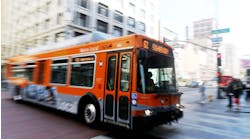The National Association of City Transportation Officials (NACTO) and the Global Designing Cities Initiative today announced the launch of the Global Street Design Guide as a globally accessible document that can be downloaded at no cost, allowing urban planners, designers and transportation practitioners in cities around the world to immediately implement tested and life-saving street designs. The worldwide release of the guide, made possible by the Bloomberg Initiative for Global Road Safety, will also soon include translations into Spanish, Portuguese, Mandarin and other languages making the guide even more accessible. The launch comes as 29 cities and 15 organizations — including London, Buenos Aires, Sydney, Addis Ababa and Toronto — have endorsed the guide as a new standard for transforming streets to prioritize safety, pedestrians, transit and sustainable mobility.
“City streets are at the center of so many big challenges facing the world, from health and safety to climate change. This guide helps city leaders meet those challenges in ways that also connect people to jobs and services and bring new life to neighborhoods. The guide is full of creative ways cities are reshaping streets to better serve the public — and if those ideas spread around the world, they can help improve billions of lives," said Michael R. Bloomberg, founder of Bloomberg Philanthropies, and former mayor of the city of New York.
“This launch puts the guide where it’s most needed — into the hands of planners, citizens and leaders in hundreds of cities,” said Janette Sadik-Khan, NACTO chair and principal at Bloomberg Associates.
“Having access to a global guide means we can utilise the best designs from around the world to ensure our city is a healthy place to live and work for everyone," said Leon Daniels, managing director, surface transport, Transport for London.
“Streets are the foundation of a city’s entire social structure — getting around, working, living, shopping, and playing. With the guide, cities have, for the first time, a universal resource for creating cities that operate for everyone who uses them," said Enrique Peñalosa, mayor of Bogotá.
“The Global Street Design Guide makes it clear that for Melbourne the first priority of city streets is people; and after all, great streets make great cities. The Guide’s people and place-based approach will help cities shift away from conventional street designs and move towards contextual solutions for our rapidly growing urban areas," said Melbourne Lord Mayor Robert Doyle.
“We need to change the way we measure the success of our streets. The Global Street Design Guide helps us shift away from evaluating our streets from how many cars they move to how well they serve everybody who uses them — and what new choices they offer for getting around safely," said Juan Jose Mendez, secretary of transportation, Buenos Aires.
The Global Street Design Guide has been endorsed by 29 global cities, including Accra, Ghana; Addis Ababa, Ethiopia; Auckland, New Zealand; Bandung, Indonesia; Bogota, Colombia; Buenos Aires, Brazil; Charlotte, USA; Chicago, USA; Fortaleza, Brazil; Helsinki, Finland; Kabul, Afghanistan; London, UK; Los Angeles, USA; Melbourne, Australia; Mexico City, Mexico; Nairobi, Kenya; New York City, USA; Philadelphia, USA; Pittsburgh, USA; Recife, Brazil; Santiago, Chile; Seattle, USA; Stockholm, Sweden; Sydney, Australia; San Francisco, USA; Sao Paulo, Brazil; Tirana, Albania; Toronto, Canada; and Vancouver, Canada.
Globally, 1.25 million people are killed in traffic deaths, often the result of road design that contributes to high speeds and dangerous driving. Created with the input of 72 cities in 42 countries, the Guide presents essential street types and unique street and intersection transformations that put people first and that can be applied to streets worldwide. With over 40 case studies from cities of wide ranging populations, the Guide shows possibilities from moving more people with transit lanes, to dedicating space for vibrant economic activity like street vendors, and provides a toolkit of street designs that can be applied in a variety of contexts worldwide.
Street design is also the key to resolving larger issues of cities’ economic vitality, livability, and physical and social mobility. The Guide comes as urban populations increase around the world and amid a sea change in the number of cities designing, testing and implementing street transformations.


